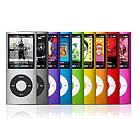 |
Fundamentally different approaches to problem-solving, nope design, nope creating products, nope life! |
Yes, it’s true that a team at Google couldn’t decide between two blues, so they’re testing 41 shades between each blue to see which one performs better. — Doug Bowman, Goodbye Google
I love this farewell post by Google’s visual design lead because it confirms a theory I’ve long held: that Google is a company where engineers are the ruling class, while at Apple it’s designers. – Buzz Andersen, Sci-fi Hi-fi
This just blew me away because of my experiences with people from both Apple and Google.
After I recovered from rolling on the floor laughing about Buzz Andersen’s comparison, I thought just how true it is. My experience with Apple goes back to trying to convince Steve Jobs that the Apple II could be used for distance education (in 1978) – interesting that I drove Steve to a meeting where we looked at Plato-IV and shortly thereafter he visited Xerox PARC and well, that became history when the Lisa and the Macintosh were invented. But, I digress, my experience with Steve is that he understands technology really, really deeply, but he is at heart an artist and his reputation as being extremely demanding is well deserved, and stems from his artistic temperament. Then there are the Googlers, especially those I’ve met recently, who do indeed want to subject every web site to a Google Analytics interrogation to determine by a percentage point which size and color of button works best – but even before they develop any traffic to the site! (Good grief, let’s get some traffic first and then let’s see what is working with visitors.) But this business about testing a half dozen different buttons is beyond me. And I’m an engineer!
Deep breath.
Why did I say different approaches to life? (In the first paragraph.) Well, it’s because I run across both of these types in life. There are people who do a great design right up front and move straight to product (even though it may take a long time). And there are people who design something and then twiddle the bits to death before finally starting to build product. In my case, I design quickly and then jump into implementation as soon as possible. I always change the design after I see the first prototype of a product. “Release early and release often” is certainly a motto I understand. I have very little tolerance for situations where everything has to be meticulously planned up front.
Apple, Google, Windows … it doesn’t matter. Computers are still ridiculously hard to use with a terrible learning curve. My new (old) mantra: “You don’t have to learn to drive every time you buy a car.” We are not even close to a ‘universal computer interface.’ Did you know, Jim, that has always been my main interest? See http://tinyurl.com/dcugv8
Here’s the difference as I see it … A car isn’t “a creative tool.” It only does one thing (shelter you while you move around at high speed). My opinion is that to use any device or technology that allows you to create new things (things like “content” or “playlist” or “custom communication”) you have to learn the language of “creation” not just the language of “use.” And this/these languages are far more complex than the passive languages of “use.”
As a separate thought, “browsers” have become our universal interface to web applications. Event though web applications all operate differently and use the interface in different ways, the browser interface (and HTML/DHTML) limit our interactions in certain ways so that we have a language of sorts that we use and we do not have to learn to use the browser all over again in order to use a new web application. Click. Click. Click. Drag. Drop. Type. ENTER. Click. (Apple did this all the way from 1984 with their standardization of the Macintosh user interface – and Microsoft to a similar degree, although they began evangelizing later than 1984.)